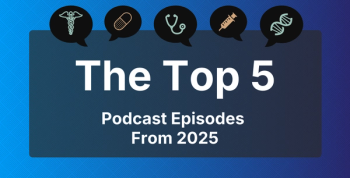
Study Outlines Association Between Arthritis, Migraine
Survey results indicate a significant association exists between migraine and arthritis among women, adults aged 45 years or less, and those over age 65.
Survey
Knees, hips, fingers and the lumbar spine are the joints most frequently affected by osteoarthritis, a degenerative joint and age-related disorder. Worldwide, roughly 9.6% and 18% of men and women over the age of 60 suffer from symptomatic osteoarthritis, respectively.
In the United States more than 54 million individuals are affected by arthritis, accounting for 23% of the adult population and $303 billion in related costs per year. Furthermore, “arthritis-attributable activity limitations affect 45.4% of older adults suffering from arthritis, and around 25% of these adults also report severe pain,” authors wrote. “These arthritis-related impairments and limitations have been found to negatively impact mental health and health-related quality of life.”
Previous studies have shown some frequently reported migraine triggers have been associated with arthritis, as individuals with arthritis have reported sleep disturbances, stress and distress, and neck pain. To characterize the association between the 2 conditions, researchers analyzed data from RAND American Life Panel (ALP) participants.
The large representative sample of American adults includes over 6000 individuals aged 18 or older from 4500 households. Participants have been interviewed regularly via the internet since 2006. A total of 2649 individuals, interviewed as part of the 2019 Health and Functional Capacity Survey, were included in the current analysis.
Participants were asked whether they suffered from arthritis, rheumatoid arthritis, and migraine, while potential confounding variables (sex, age, ethnicity, marital status, education, among others) were also recorded. “In order to increase the relative prevalence of osteoarthritis among participants with arthritis, individuals reporting rheumatoid arthritis were excluded from the arthritis group,” researchers wrote.
The majority of participants were female (51.7%) with a mean (SD) age of 50.6 (15.9) years, while 796 participants reported having arthritis. Female sex, older age, no employment, coronary heart disease, asthma, depression and anxiety were more frequently reported among those with arthritis. A total of 10.7% of the overall population reported having migraine, and prevalence was significantly higher among women and younger adults compared with men and older adults, respectively.
Adjusted analyses (P <.05 for all) revealed:
- A positive and significant association between arthritis and migraine (OR 1.83; 95% CI, 1.20–2.81)
- Sex tended to be a significant effect modifier in the arthritis–migraine relationship (P = .058); the association was only significant in women (OR 2.33; 95% CI,1.44–3.77)
- Age modified the association between arthritis and migraine, which was found to be significant in adults aged ≤45 years (OR 3.12; 95% CI,1.36–7.17) and aged >65 years (OR 2.87; 95% CI,1.12–7.37).
Several explanations could account for the positive association, including overlapping consequences of arthritis and triggers for migraine. In addition, “exercise is recommended as a non-pharmacological treatment for arthritis but has also been shown to be a trigger for migraines,” while inflammation has been implicated in the development of both conditions. Research indicates gut microbial dysbiosis may also be a common denominator of migraine and arthritis.
Migraine is 3 times more prevalent in American women compared with men and has been linked to drops in estrogen levels. “Importantly, in women, low levels of estrogen are also associated with higher levels of arthritis,” authors noted.Researchers also hypothesized differing stress levels throughout life and pain sensitivity in old age may account for the association differences observed between age groups.
The cross-sectional nature of the study prohibits any inference as to the direction of the relationship, and, as results are based on self-reported exposure and outcome variables, bias cannot be ruled out. A lack of data on timing of arthritis and migraine onset, and on behavioral factors (smoking, physical activity) mark additional limitations to the study.
Future studies ought to investigate the prevalence of migraine among those with certain types of arthritis, like ankylosing spondylitis or gout, to better understand the association.
“The mere fact that arthritis and migraine may coexist is problematic, as this could lead to an important medical and economic burden. Therefore, strategies should be implemented to reduce the cooccurrence of these two chronic conditions,” authors concluded.
Reference
Association between arthritis and migraine: a US nationally representative study including 2649 adults. J Clin Med. Published online January 18, 2021. doi:10.3390/jcm10020342
Newsletter
Stay ahead of policy, cost, and value—subscribe to AJMC for expert insights at the intersection of clinical care and health economics.








































